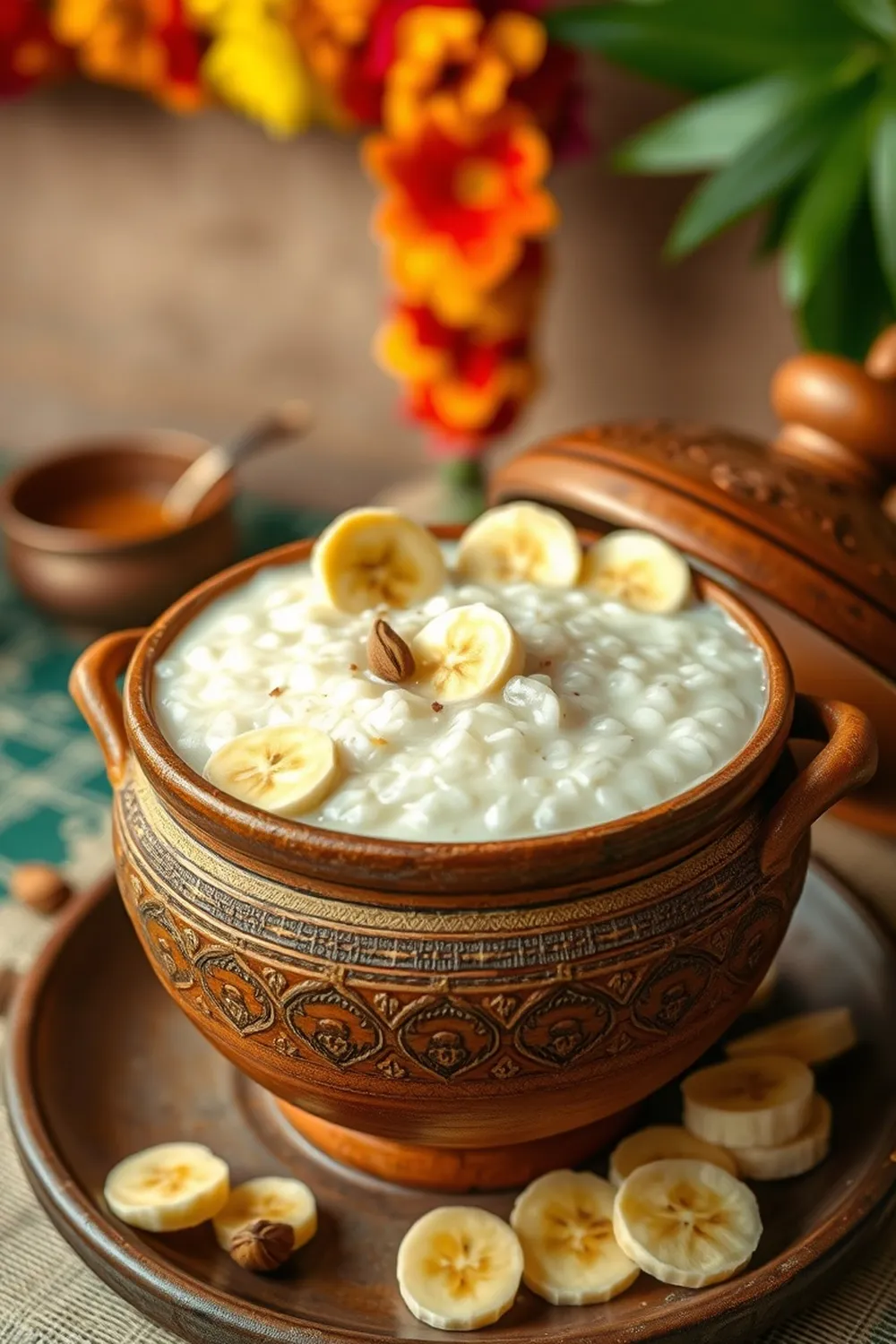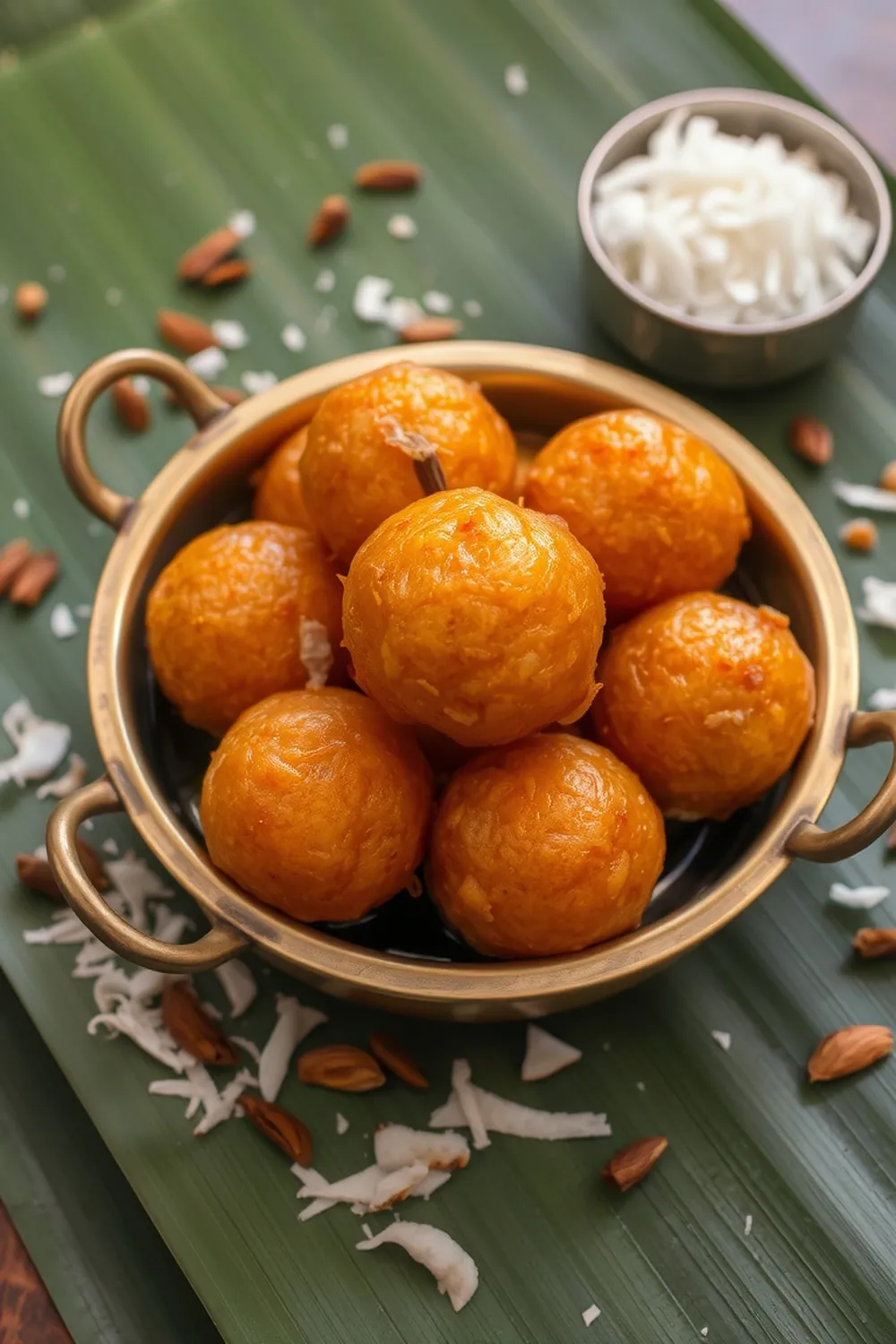- In a bowl, combine all-purpose flour, corn flour, baking soda, ghee, and yellow food color. Mix well.
- Add thick yogurt and gradually mix in water to form a thick batter with a consistency similar to vada batter.
- Cover and let the batter ferment overnight (12 hours) in a warm place.
- After fermentation, stir the batter vigorously until it reaches a light and airy, dropping consistency.
- Prepare sugar syrup by boiling sugar and water for 15-20 minutes, or until one-string consistency is achieved. Add yellow food color during the last few minutes.
- Add lemon juice, rose essence or cardamom powder, and saffron to the syrup. Keep warm on low heat.
- Heat oil mixed with ghee in a flat pan on medium flame for frying.
- Fill a piping bag or cloth with a small hole with the batter. Pipe concentric circles into the hot oil.
- Fry jalebis until crisp and golden brown, flipping once to ensure even cooking.
- Immediately transfer fried jalebis to the warm sugar syrup. Soak for 1-2 minutes.
- Remove from syrup, drain excess liquid, and arrange on a plate. Serve warm.
- Calories:250 kcal25%
- Energy:1046 kJ22%
- Protein:3 g28%
- Carbohydrates:35 mg40%
- Sugar:25 mg8%
- Salt:150 g25%
- Fat:12 g20%
Last Updated on 2 months by Neha Deshmukh
Authentic Jalebi Recipe – Crispy, Golden & Rose-Flavored Sweet
Hey everyone! If you’ve ever dreamt of making those perfectly swirly, crispy, and syrup-soaked Jalebis you find at Indian sweet shops, you’re in the right place. I remember the first time I tried making these – it was a bit of a sticky situation (pun intended!), but trust me, with a little patience and this recipe, you’ll be enjoying warm, homemade Jalebis in no time. They’re seriously addictive!
Why You’ll Love This Recipe
This Jalebi recipe isn’t just about following steps; it’s about capturing that authentic Indian sweet flavor. We’re aiming for that perfect balance of crispiness, a soft interior, and a delightful rose-flavored syrup. It’s a little bit of effort, but the reward is so worth it. Plus, making them at home means you control the ingredients and can adjust the sweetness to your liking.
Ingredients
Here’s what you’ll need to create these golden beauties:
- 1 cup All-Purpose Flour (Maida)
- 2 tablespoons Corn Flour
- ?? cup Thick Curd (Dahi) – about ¾ cup, see notes below
- 1 pinch Cooking Soda
- 2 tablespoons Ghee
- ?? pinch Yellow Food Colour – a tiny pinch goes a long way!
- as needed Oil + ghee – for deep frying
- 1 cup Sugar
- 1 cup Water
- 1 teaspoon Lemon Juice
- ?? pinch Yellow Food Colour – for the syrup
- as needed Rose essence or cardamom powder – to taste
Ingredient Notes
Let’s talk ingredients – getting these right makes all the difference!
All-Purpose Flour (Maida) – Choosing the Right Type
Maida is key for that signature Jalebi texture. It’s a finely milled wheat flour. Don’t substitute with whole wheat flour, as it won’t give you the same results.
Corn Flour – For the Perfect Crisp
Corn flour (cornstarch) is our secret weapon for extra crispiness. It helps create a light and airy texture.
Thick Curd (Dahi) – Importance of Consistency & Regional Variations
This is where things get interesting! You need thick curd, almost like Greek yogurt. If your curd is too runny, the batter won’t ferment properly. In some regions, people use slightly sour curd, which adds a lovely tang. About ¾ cup should do the trick, but adjust as needed to get a thick consistency.
Ghee – Traditional vs. Modern Usage
Ghee adds a beautiful richness and flavor. Traditionally, Jalebis were fried entirely in ghee, but using a mix of oil and ghee is more common now – it helps prevent the ghee from burning.
Saffron – The Royal Touch & Alternatives
A few strands of saffron infused in the syrup adds a luxurious touch. It’s optional, but highly recommended! If saffron is unavailable, a tiny drop of yellow food coloring will give you the traditional golden hue.
Rose Essence/Cardamom Powder – Aromatic Choices
I personally love the delicate floral aroma of rose essence, but cardamom powder is a classic choice too. You can even use a combination of both!
Step-By-Step Instructions
Alright, let’s get cooking!
- In a bowl, combine the all-purpose flour, corn flour, cooking soda, ghee, and a pinch of yellow food color. Mix everything well until it resembles breadcrumbs.
- Add the thick curd and gradually mix in water, a little at a time, to form a thick batter. It should be similar in consistency to vada batter – not too runny, not too thick.
- Cover the batter and let it ferment overnight (around 12 hours) in a warm place. This is crucial for that light and airy texture.
- After fermentation, give the batter a really good stir. It will likely be bubbly and slightly sticky. If it’s too thick, add a tablespoon of water at a time until you reach a dropping consistency.
- Now, for the syrup! In a separate pan, boil the sugar and water together with a pinch of yellow food color for about 15 minutes, or until you reach one-string consistency (more on that in the FAQs!).
- Once the syrup is ready, add the lemon juice, rose essence (or cardamom powder), and saffron. Keep it warm on low heat.
- Heat oil mixed with ghee in a flat pan on medium flame.
- Fill a piping bag (or a clean cloth with a small hole) with the Jalebi batter. Gently pipe concentric circles into the hot oil. Don’t overcrowd the pan!
- Fry the Jalebis until they’re crisp and golden brown, flipping once to ensure even cooking.
- Immediately transfer the fried Jalebis to the warm sugar syrup. Let them soak for about 2 minutes, flipping them halfway through.
- Remove from the syrup, drain off any excess liquid, and arrange on a plate. Serve warm and enjoy!
Expert Tips
- Batter Consistency is Key: Seriously, this is the most important part. A well-fermented, properly textured batter is what makes or breaks Jalebis.
- Syrup Temperature: The syrup needs to be warm, but not boiling hot, when you add the Jalebis. Otherwise, they’ll become soggy.
- Don’t Overcrowd: Frying too many Jalebis at once will lower the oil temperature and result in soggy Jalebis.
Variations
Want to switch things up? Here are a few ideas:
Vegan Jalebi
Substitute the ghee with a neutral-flavored oil and use a plant-based yogurt for the curd.
Gluten-Free Jalebi
This one’s tricky! You can experiment with a gluten-free flour blend, but the texture won’t be exactly the same. Rice flour and tapioca starch can be a good starting point.
Spice Level Adjustment (Cardamom Focus)
My friend, Priya, loves a strong cardamom flavor. She adds a full teaspoon of cardamom powder to both the batter and the syrup!
Festival Adaptations (Holi, Diwali)
During festivals like Holi and Diwali, my family loves to add a tiny bit of edible silver leaf (vark) to the Jalebis for an extra festive touch.
Serving Suggestions
Jalebis are best enjoyed warm, straight from the syrup! They’re fantastic with a cup of chai or a glass of cold milk. You can also serve them with rabri (thickened milk) for an extra indulgent treat.
Storage Instructions
Honestly, Jalebis are best eaten fresh. However, if you have leftovers, you can store them in an airtight container at room temperature for a day or two. They will lose some of their crispiness, but you can briefly reheat them in a microwave or oven to revive them slightly.
FAQs
What type of curd is best for jalebi batter?
Thick, set curd is essential! Think Greek yogurt consistency. Avoid runny or sour curd if possible, but a slightly tangy curd can add a nice flavor.
Can I use a different color instead of yellow food coloring?
Yes, saffron is a natural alternative and adds a beautiful flavor.
How do I know when the sugar syrup has reached one-string consistency?
Take a small amount of syrup between your thumb and forefinger. If it forms a single, sticky string when you open your fingers, it’s ready!
What if my jalebi batter is too thick or too thin after fermentation?
If it’s too thick, add a tablespoon of water at a time until it reaches a dropping consistency. If it’s too thin, you might need to add a tablespoon of flour, but this is harder to fix – prevention is key!
Can jalebi be made without a piping bag?
Yes! You can use a clean cloth with a small hole cut in it. It’s a bit more challenging to get the perfect swirl, but it works in a pinch.
How can I prevent jalebis from absorbing too much syrup?
Make sure the syrup is warm, not boiling hot, and don’t soak the Jalebis for too long – 2 minutes is usually enough.
Enjoy making these delicious Jalebis! Let me know how they turn out in the comments below. Happy cooking!










